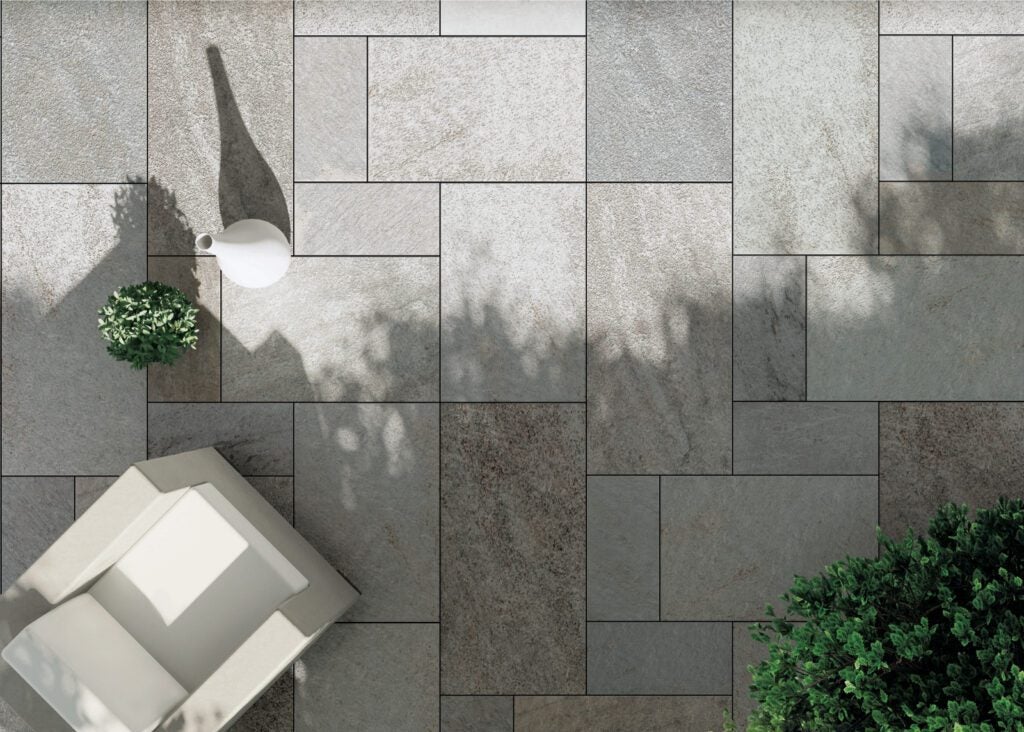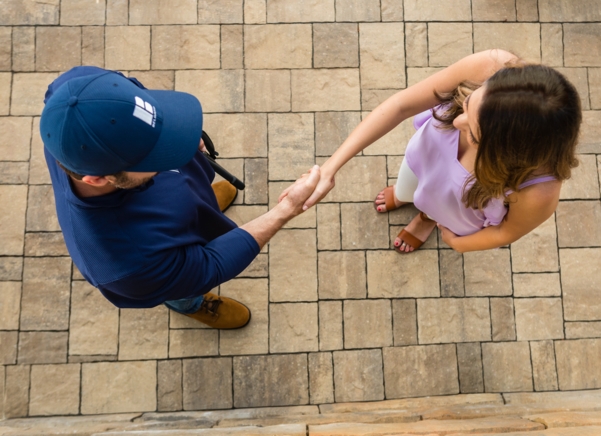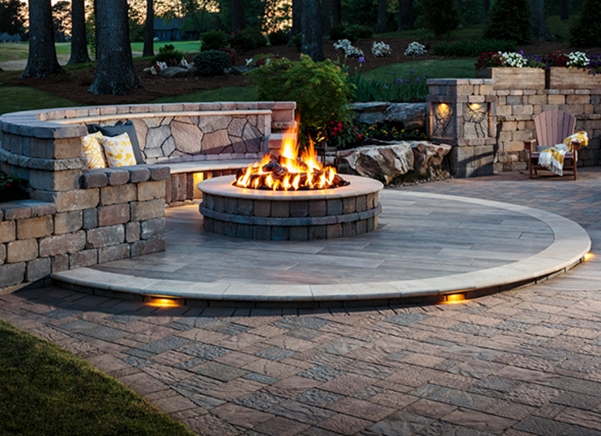Since introducing the Porcelain Paver line in 2015, Belgard has seen an incredible response from the field regarding this contemporary product line that bridges the gap between natural stone and concrete pavers, installs over multiple surfaces, and allows for outdoor applications that mirror the most current interior design trends. These low-maintenance pavers offer a great deal of design versatility and trend-forward aesthetics. This best practices guide offers tips and considerations regarding design, maintenance and the various installation methods.
. . .
DESIGN CONSIDERATIONS
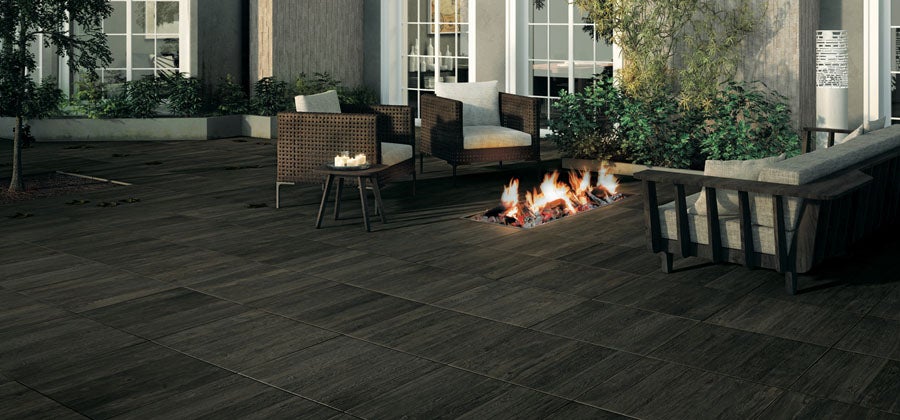
With an upscale contemporary look ideal for both residential and commercial applications, Belgard Porcelain Pavers are available in over 40 interpretations of stone, wood, and concrete textures, as well as a variety of modular shapes. Standard sizes vary by region, but are available up to a 24×24 square and 12×48 plank. Additional sizes such as 18×36, 24×36, and 24×48 are regionally available or can be ordered as needed. Additional sizes can also be special ordered, including large slabs for steps and outdoor kitchen countertops.
Depending on color selection and use, projects can earn up to 10 LEED credits. Some colors have a solar reflectance index (SRI) of 60-80%, indicated low heat absorption and reduction of urban heat island effect. These lighter colors are recommended for poolscapes and areas with high levels of sun exposure. A number of accessory pieces are available for poolscapes, including trims, grates, and coping. The Unico unit is a trim piece that is square on one side and bullnose on the other, and can be used both as pool coping and as step treads.
INSTALLATION CONSIDERATIONS
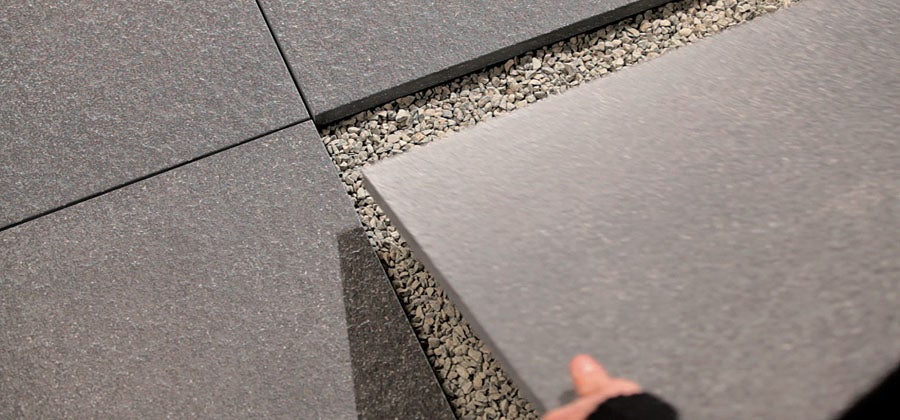
Porcelain pavers offer the installation flexibility to install over sand, grass, gravel, concrete, or raised pedestals, depending upon application. Although considered pavers, porcelain pavers install more like tile because there is no interlock, and only the base can be compacted, not the installed product. However, if you are using a roller compactor then a light compaction can be done on the top of the porcelain product.
Handling: Proper handling of the product is key. Pallets of porcelain pavers are shipped with a heavy duty plastic protective pallet cover, and the individual porcelain pavers are packaged in protective cardboard boxes. To prevent damage, do not remove the protective cardboard boxes until ready to install the pavers. Also note that handling multiple loose stones together creates the possibility for chipping.
Sand Base: For small patios or walkways over concrete or level ground in dryer climates, porcelain pavers can be installed over a compacted sand base. Installing porcelain pavers requires the bedding course sand to be pre-compacted and then struck off with a screed. Do not compact dry sand, but insure the sand has a 5 to 6% moisture content so that it will compact cohesively and allow for a smooth strike off finish.
Grass Base: Installing directly over grass is an option for small patios, walkways, or stepping stones. Sand should be added where needed to help with leveling and to prevent future breakage. With either a sand or grass base, the installer should be cognizant of corners and ensure that they do not present a tripping hazard.
Gravel Base: A compacted gravel base is an option for small patios, walkways, or Japanese-style (recessed) stepping stones. For gravel base installation, dig a 2-inch base, add fine gravel, compact the gravel, then lay pavers directly over the gravel.
Standard Paver Base: The most common installation method for patios, walkways, and poolscapes follows a similar installation method for installing standard concrete pavers. Depending on the environment, dig 6 to 8 inches, add subgrade gravel, then 1 to 2 inches of compacted sand, struck off with screed.
Joint Options: When installing over sand, gravel, grass, or a standard paver base, clear disc spacers are used to create even joints. Joints can be left open, to create a permeable surface, or can be filled with either polymeric sand or cement-based grout.
Concrete Base: As an option to overlay an existing concrete slab, or to provide additional strength for vehicular applications, LATICRETE 254 Platinum (must be used for exterior applications), or MVIS Hi-Bond Veneer Mortar can be used to adhere the paver to the base. To support vehicular loads, expansion joints are required and must be filled with cement-based grout.
Pedestal Installation: As an option for patio, plaza, or terrace applications, porcelain pavers can be installed using a raised pedestal system. One of the benefits of using a raised pedestal system is that pipes and wiring systems can be laid underneath the tiled surface to be inspected or serviced at any time. Pedestal installation is ideal for installing large surfaces quickly, since prep work is minimal and jointing materials are not required. There are times when terrace applications can be installed directly to the surface with thinset mortar, but pedestal installation will usually be preferred for drainage and access reasons. It is recommended to consult an engineer for specifications.
Cutting Tools: It is recommended to cut porcelain pavers with a wet saw using a wet porcelain blade, which will provide a smoother cut, reduce dust and avoid chipping.
Installation Training: Belgard offers porcelain paver installation training through a variety of methods. Local sales reps can be called upon to do hands-on training on site or for group Lunch & Learn courses. Belgard also offers training through our Belgard University program. To schedule training through a local rep, call 877-BELGARD (235-4273). Additionally, the full installation guide for porcelain pavers can be downloaded here.
MAINTENANCE CONSIDERATIONS
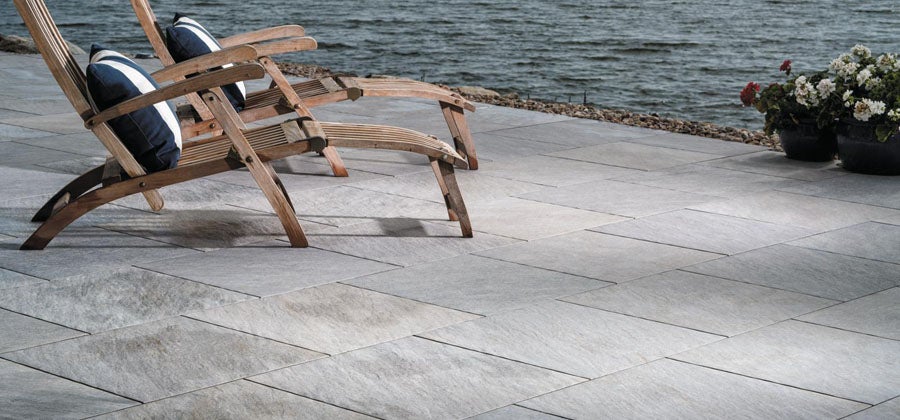
Belgard Porcelain Pavers ward off all stains including red wine, acid, and oil. The color will never fade, and they never need to be sealed. There is no color variation from unit to unit, like with natural stone, and pavers won’t discolor or allow moss or mold growth.
Breakage: With a PSI strength of over 38,000 pounds, Belgard Porcelain Pavers support up to 2,200 pounds for pedestal installations, and support vehicular loads with a concrete base and a mortar adhesive. If a paver should crack or chip, it can easily be removed with a special tool and replaced.
Cleaning: Belgard Porcelain Pavers can be cleaned using any type of cleaner and can withstand pressure-washing without deterioration of the finish. It is recommended to pressure wash at 1,600 PSI or less to avoid degradation of any jointing material.
Freeze/Thaw Cycles: Belgard Porcelain Pavers are frost free and resistant to thermal shock caused by freeze and thaw cycles in colder climates. Porcelain pavers also resists degradation from deicing salts and other chemical agents.
